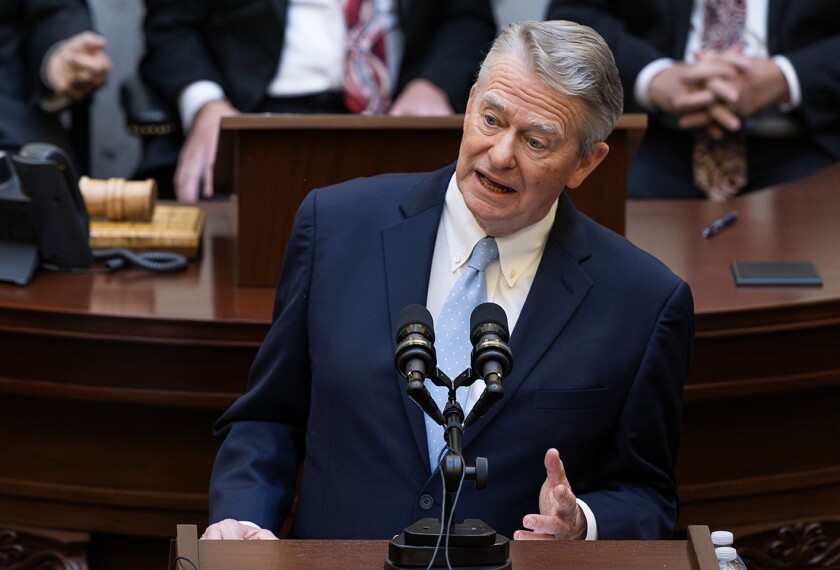For complete coverage of this year’s governors’ speeches, check out State of the States 2011.
MAINE
Gov. Paul R. LePage (R) • Feb. 10
In contrast to other GOP governors who have sought cuts to education, Gov. LePage in his budget address proposed a $6.1 billion, biennial 2012-13 budget for Maine that would return state support for schools to prerecession spending levels by fiscal 2013, but would cut pension benefits to retired teachers and other public workers.
The governor would increase state aid to local school districts in the next two years by $63 million, to $914 million, matching fiscal 2007 levels. “And it will not be enough,” said Mr. LePage, who was elected in November. “Education funding is never enough because too many resources are diverted before they reach the classroom. We are working on reforms that make the student the most important person in the classroom.”
The budget would provide flat funding for higher education, but the governor called on the legislature to create Maine Higher Education Savings Bonds to help families save more for college on their own.
The budget would pay for the education spending in part by freezing state pensions for three years, raising the retirement age for new workers to 65 from 62, and increasing their retirement contributions by 2 percentage points of salary. —Sarah D. Sparks
MINNESOTA
Gov. Mark Dayton (D) • Feb. 9

Education is feeling the pinch as state budgets tighten nationwide. Read what the governors plan for education funding and reform in 2011 in our State of the State and budget address roundups. Read more.
Despite budget constraints in his state, Gov. Dayton in his first State of the State address asked the legislature to increase funding for K-12 education. He said his goal is to increase such funding every year that he’s governor, “with no excuses and no exceptions.”
The governor proposed that K-12 funding be $14.4 billion out of a budget of $37.1 billion for the 2012-13 biennium, up from $14.3 in K-12 funding for the current biennium.
Gov. Dayton proposed raising education funding particularly to increase the number of children who receive all-day kindergarten, noting that states such as Alabama, Louisiana, and Mississippi pay for such services. He also re-established the governor’s council on early-childhood education and the children’s cabinet, which are headed by the state’s education commissioner. —Mary Ann Zehr
TEXAS
Gov. Rick Perry (R) • Feb. 8
In his State of the State address,Gov. Perry stressed the need for cuts in K-12 school budgets rather than increased spending, arguing that voters had sent a message in the November elections that “they want government to be even leaner and more efficient.” The governor recommended that the state spend $14.2 billion on K-12 education in fiscal 2012, out of a budget of $22 billion, a decrease of 10 percent from the current fiscal year. Texas approves a budget every two years. The governor proposed an even smaller K-12 budget for fiscal 2013 of $13.9 billion, out of a state budget of $21.9 billion.
Mr. Perry said he is looking for the legislature to approve bills that reduce the dropout rate and suggested the states Virtual School Network be expanded with the addition of an online high school, which could help students who have dropped out of school to recover credits. To save money, he urged school districts to enter into shared service arrangements with other institutions in their region. —Mary Ann Zehr





